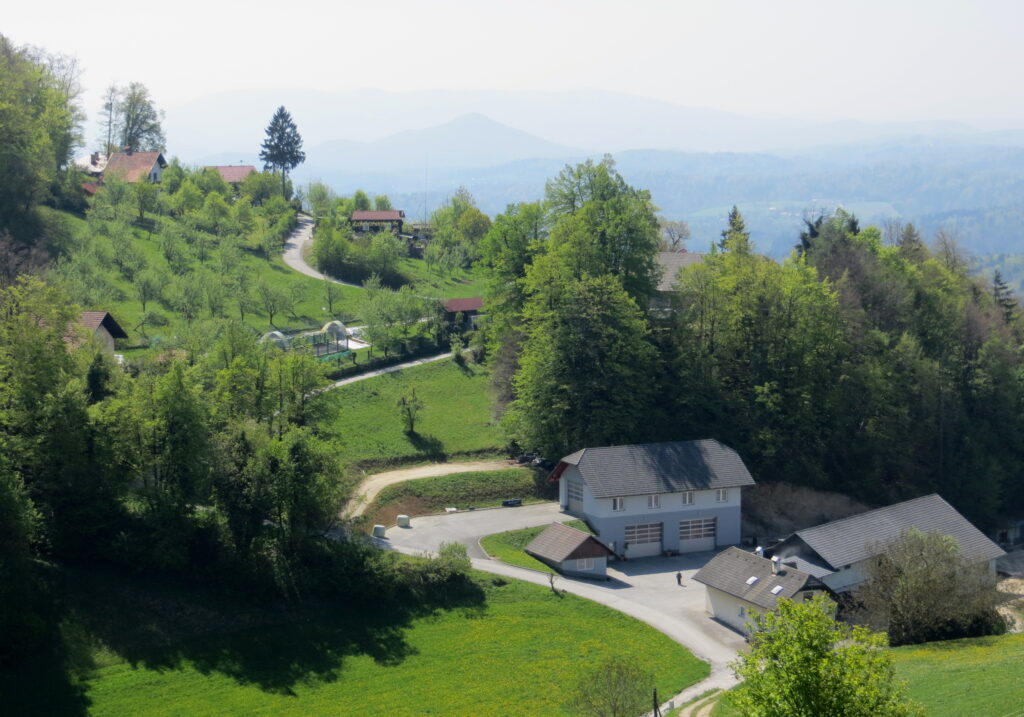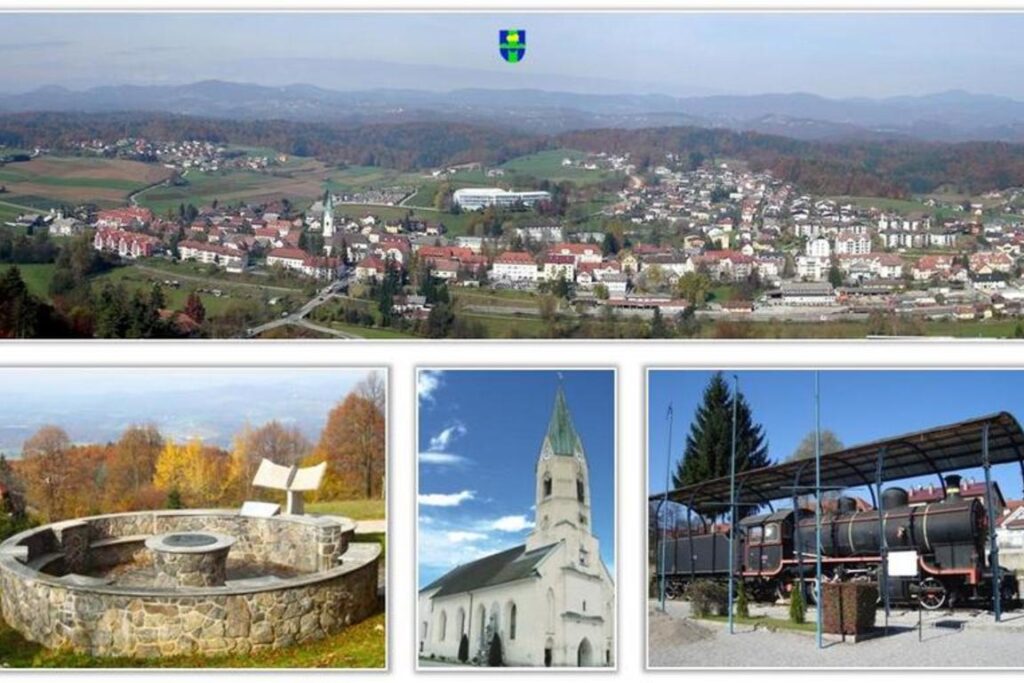Trebnje is a town in southeastern Slovenia. Trebnje lies on the Temenica River in the traditional region of Lower Carniola. The area was already settled in Antiquity. The modern settlement developed on the main regional road and railway line from Ljubljana to Novo Mesto. The old town center with the parish church stands slightly raised on the left bank of Temenica River, and the new part extends to the north from the railway line and the regional road toward Novo Mesto.
Trebnje is the centre of the Municipality of Trebnje.
| Country | |
|---|---|
| Government | |
| • Mayor | Alojzij Kastelic |
| Area | |
| • Total | 195 km (75 sq mi) |
| Population (2010) | |
| • Total | 14,641 |
| • Density | 75/km (190/sq mi) |
| Time zone | UTC+01 (CET) |
| • Summer (DST) | UTC+02 (CEST) |
The community Trebnje covers, with its 12.213 inhabitants and 133 settlements, 163,30 km2. It is sorrounded by picturesque hills, where forests and vineyards are complemented by typical peasants and vinegroves cottages. The image is completed by small churches, interesting for their cultural background or arhitecture; some of them, though, are well known for mediaeval frescoes. The whole area invites visitors to walkings, sport activities, hunting and fishing. Accomodation is offered in private pensions.
History
The area was already settled by humans in the Stone Age. In the Roman times, a settlement named Praetorium Latobicorum was located in the area, along the road linking Emona and Siscia. After the decline of the Roman Empire, the first mention of Trebnje as a market town dates to 1351, and a proto-parish was mentioned in 1163.
At the end of the 18th century, Trebnje was the seat of the district commissioner. Later it also became the seat of the political, judicial, fiscal, and electoral districts as well as an important station on a regular mail connection between Ljubljana and Karlovac.
Trebnje’s economic progress was supported by a favorable transportational position on an intersection of local roads and a railway. Trebnje remained a small economic center of its agricultural surrounding until the end of Second World War despite of this position. After 1958, when it became the center of a municipality and a new road between Ljubljana and Zagreb had been built, Trebnje improved in metal, woodworking, textile and construction industry.
Landmarks
The parish church in the town is dedicated to the Assumption of Mary and belongs to the Roman Catholic Diocese of Novo Mesto. It was first mentioned in written documents dating to 1163. The building dates to the mid-15th century. It was vaulted in 1645 and extended in the mid-18th century. At the main entrance of the church one can see a Roman stone relief of three busts, and the main altar’s painting was made by Matevž Langus. A statue dedicated to Frederic Baraga, a missionary and linguist, stands in front of the church.
Trebnje Castle is a 13th-century castle on the right bank of the Temenica River south of the town centre. It was extended in the 17th and 18th century. It owes its current look to a 19th-century remodelling in the historicist style.
Transport
A railway has connected Trebnje with Novo Mesto and Ljubljana since 1894, and with the town of Sevnica since 1938. Part of the railway towards Sevnica up to the mining settlement of Krmelj was already built by 1908, although since 1996 Krmelj has not been included on it. Since 2010, the A2 motorway, traversing Slovenia from northwest to southeast, has run past Trebnje.
Contacts
Župan Občine Trebnje / Mayor
g. Alojzij KASTELIC
Goliev trg 5, 8210 Trebnje
Telefonska številka tajništva: (07) 348 11 04
Faks: (07) 348 11 31
Elektronski naslov: info@trebnje.si
Uradne ure/Working hours
Ponedeljek: 8:00-11:00, 12:00-15:00
Torek: (ni uradnih ur)
Sreda: 8:00-11:00, 12:00-17:00
Četrtek: (ni uradnih ur)
Petek: 8:00-11:00, 12:00-14:00




